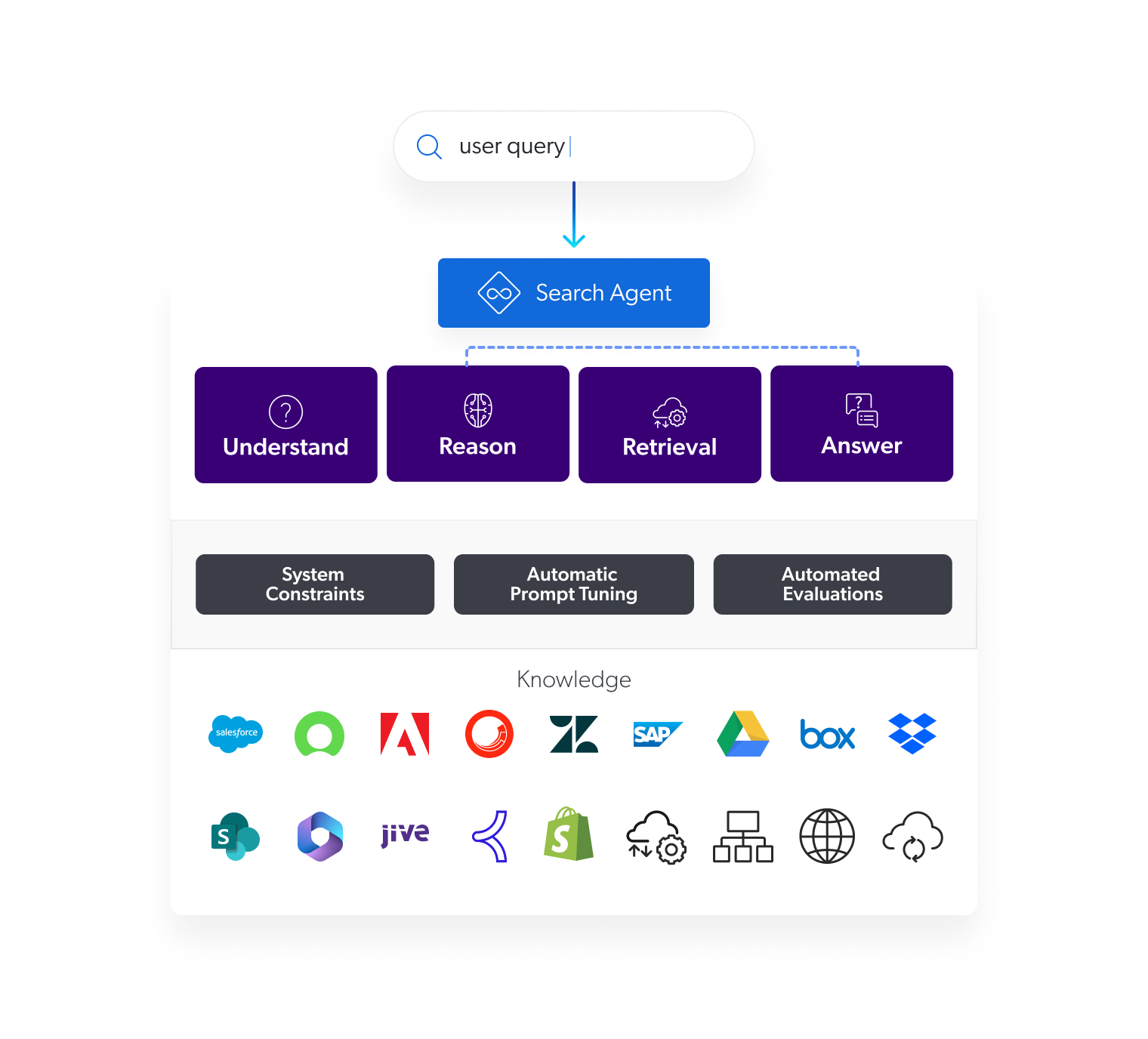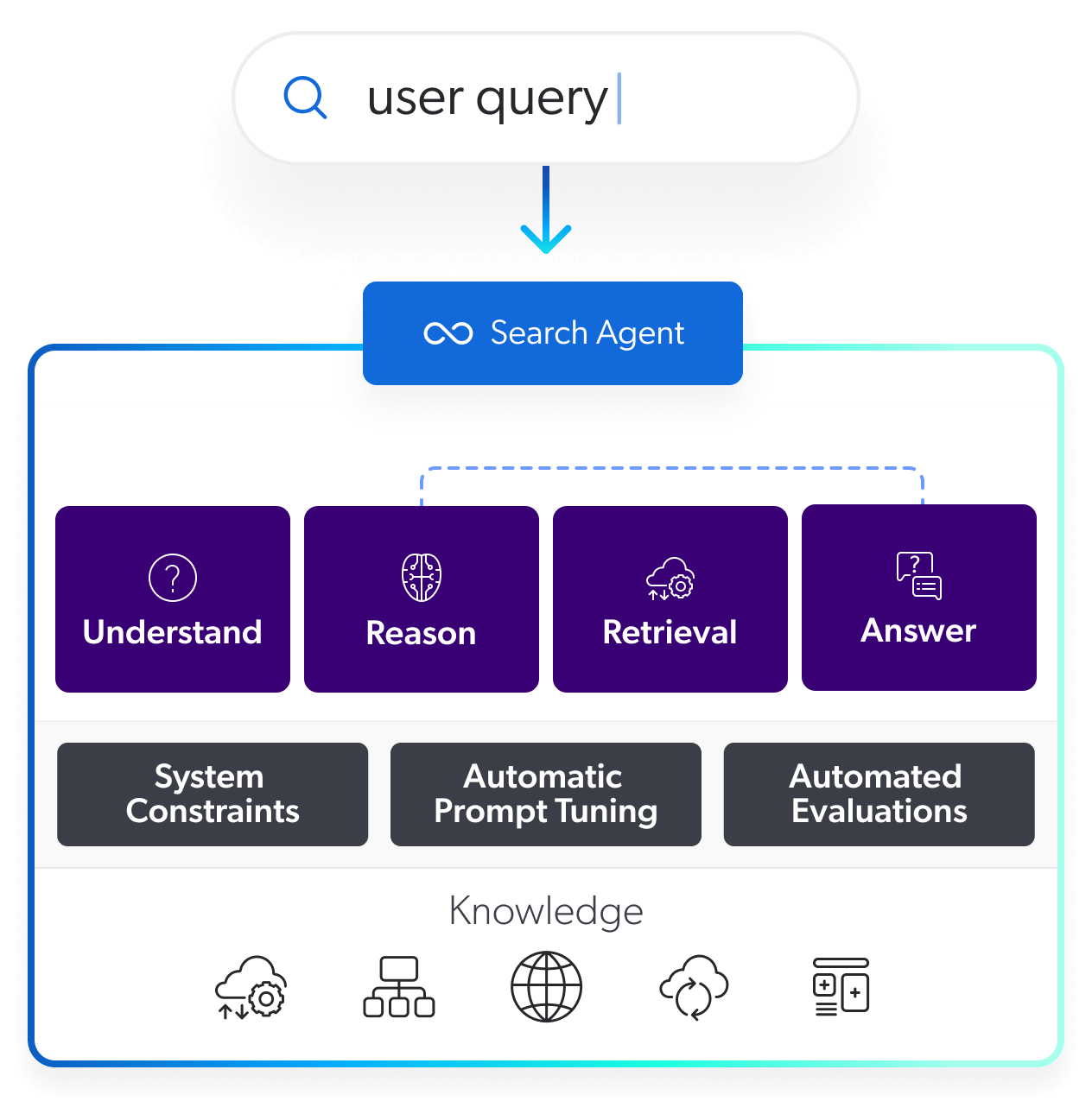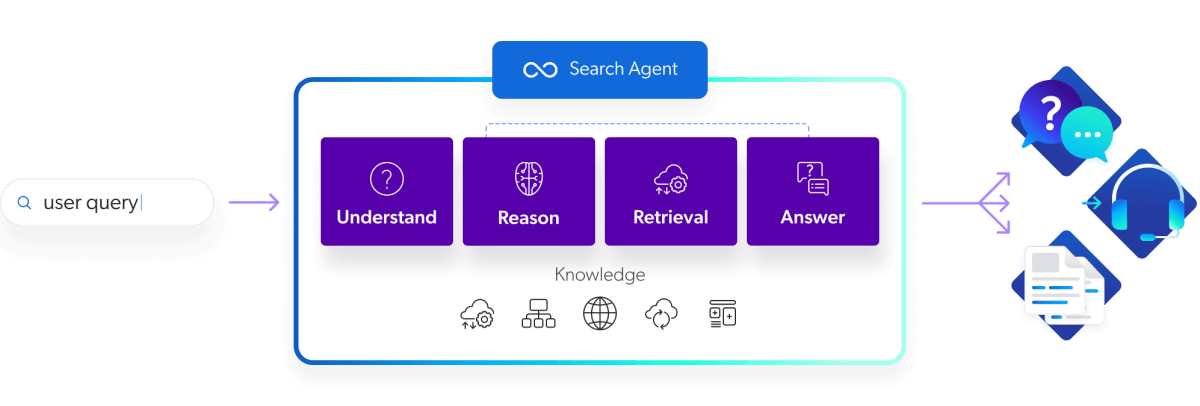

Most AI sits in the passenger seat — processing data, following scripts, and offering pre‑set outputs. But agentic AI takes the wheel. It doesn't wait for a prompt; it sets objectives, navigates complexity, and executes independently to move your business forward.
The word "agentic" stems from agency — the capacity to act with intention. And that’s the breakthrough: this isn’t just about AI responding to queries. It’s about AI acting with purpose to complete complex tasks and augment workflows — sometimes with multiple agents.
Where a traditional AI solution is reactive, agentic AI is autonomous and outcome‑oriented — reshaping how enterprises drive efficiency, growth, and innovation at scale.

Some examples of agentic AI include:
An agentic RAG architecture refers to the system design that combines retrieval-augmented generation with autonomous reasoning — where the agent decides what to retrieve, when, and how to use it in multi-step tasks. It focuses on the technical structure (e.g., memory, planning, retriever integration).
In contrast, an agentic workflow is the business process or task automation that the agent carries out—like summarizing reports or triaging tickets. It defines the sequence of actions an agent takes to fulfill a goal. In short: architecture is the engine, workflow is the route. One powers the other.
Agentic AI can act autonomously, which makes it powerful but also risky. Key concerns include loss of control (it may make unexpected decisions), compound hallucinations (a bad step can lead to worse outcomes), misuse of tools (like calling the wrong API), security gaps (accessing sensitive data), and unclear accountability (who’s responsible for its actions). It’s harder to predict or audit than simpler AI.
Emerging Technology: Agentic AI is still in its early stages, with evolving architectures, frameworks, and best practices. This immaturity creates uncertainty for enterprises around long-term viability, vendor stability, and integration roadmaps. Tooling is often fragmented, requiring custom development or stitching together open-source components. As a result, teams may face a steep learning curve and limited internal expertise, making pilots slow or difficult to scale beyond proof-of-concept.
Siloed Enterprise Knowledge: Most organizations suffer from scattered, inconsistent, or incomplete knowledge repositories — across CRMs, wikis, document stores, and databases. An agentic AI system relies heavily on access to high-quality, structured, and up-to-date information to reason, plan, and take actions effectively. If knowledge is siloed or poorly indexed, agents will underperform, hallucinate, or make faulty decisions. This challenge is amplified when real-time retrieved information, grounding, or multi-modal understanding is required. Without a unified retrieval layer or orchestration strategy, agent behavior becomes brittle and unreliable.
Security and Governance: With autonomous decision-making and tool use, agentic AI poses increased risks to data security, compliance, and operational governance. Agents might access confidential data, call sensitive APIs, or perform actions beyond their intended scope — especially when granted tool access or integrated into production workflows. Traditional security models (role-based access, audit logs) often fall short for dynamically acting agents. Enterprises must implement guardrails, sandboxing, and approval loops to ensure agents behave safely and transparently. Governance frameworks must also evolve to track agent decisions, intervene when needed, and assign accountability.
Agentic AI represents a transformative leap — but successful adoption hinges on enterprise readiness. That means having a secure, connected data ecosystem, governance frameworks, and scalable infrastructure in place.
These systems must enable agents to access trusted knowledge, reason autonomously, and act reliably across touchpoints. Without these foundations, agentic initiatives often stall in costly, unscalable prototypes. Executives should focus on use cases with measurable ROI, ensure interoperability across platforms, and establish controls to manage risk.
Starting with reactive AI (like generative answering) builds internal maturity — paving the way for agentic capabilities that drive meaningful efficiency, innovation, and competitive differentiation at scale.
Today’s enterprises need unfettered-yet-intentional access to information. By combining methods like a unified index, hybrid retrieval, user behavior, and numerous machine learning models to not only source related documents but also evaluate by relevance, enterprises can build a dynamic experience that scales as their business does.
A unified index centralizes access to data across all sources and repositories. This way, a user does not need to know where a document is stored; instead, they can simply query the index and get a response. Coveo’s unified index also incorporates early-binding security (meaning it indexes permissions at the document level) and role-based access controls, so users only ever have access to the documents they have permission to see.
Documents are also chunked and vectored at time of indexing, making it easier to quickly retrieve relevant passages instead of whole documents. This provides guardrails against AI hallucinations and bad answers.
Hybrid retrieval combines the precision of lexical search with the contextual understanding of semantic search. The information retrieval system first uses a lexical method to retrieve documents that match the query or prompt submitted. It then layers in semantic/vector search to expand results to relevant, related documents that could also match the query.
The addition of AI enhances traditional keyword-focused approaches, particularly in the areas of personalization and predictive search, by allowing the system to understand user behavior patterns and create “digital twins.” It can learn from one user’s successful interactions to improve results for similar users.
By capturing signal data on every user’s action, modern search platforms can determine intent. And by accounting for personal data (including geo-location), the platform can match a query to mapped content and retrieve the most relevant results.
Coveo adds an additional, proprietary layer of relevance into the traditional RAG methodology, adding in an additional R. AI retrieves the most pertinent results within an enterprises’ unified index, and then from that selection, the most relevant chunks of information are selected to then be fed to a generative model for output. With Coveo’s fully managed Relevance Generative Answering, enterprises can harness RAG as a Service to embed accurate, secure generative answering throughout their digital experience.
In addition to Relevance Generative Answering, Coveo also offers a deep suite of enterprise-grade ML models that streamline and enhance the digital experience across all touchpoints.